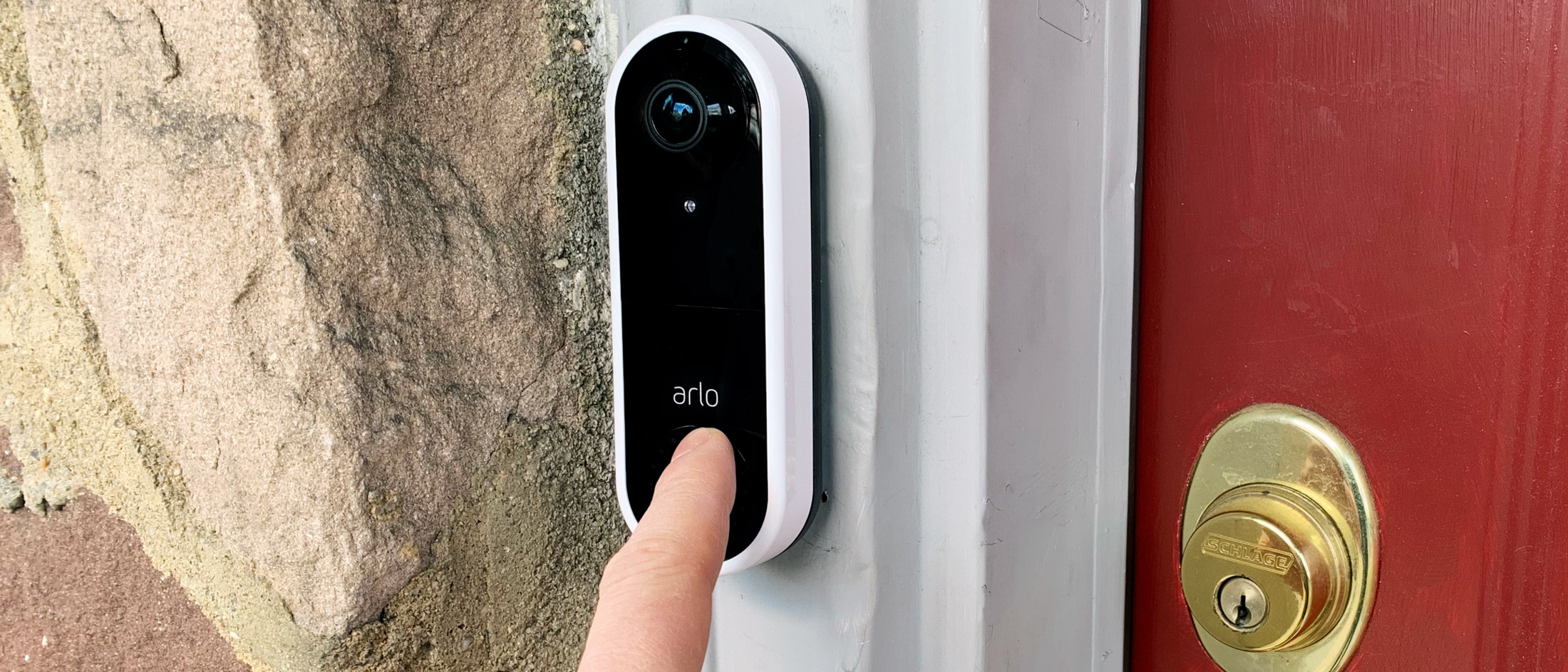Tom's Guide Verdict
The Arlo video doorbell has nearly all the features you'd want in a video doorbell, and it costs less than the competition.
Pros
- +
Great video quality
- +
Clear audio
- +
Person, package, animal detection
- +
Feature-packed app
Cons
- -
Requires subscription for most features
- -
Wired only
- -
No HomeKit support at present
Why you can trust Tom's Guide
Arlo, which makes some of the best home security cameras, has turned its attention to your front door. The Arlo Video Doorbell takes many of the best features from the company's other devices — a comprehensive app, great video and audio quality — and puts them in a video doorbell.
Video resolution: 1536 x 1536
Field of view: 180 degrees (corner to corner)
Works with: Alexa, Google Assistant
Size: 5.1 x 1.8 x 1 inches
Wired/battery: Wired
Starting storage fee: $3/month for 30 days video
While Arlo's effort falls just short of the Nest Hello, in our Arlo Video Doorbell review, we found that this device has enough going for it that we can recommend it as one of the best video doorbells. However, you'll want to sign up for a subscription to get all of this device's best features.
- Ring vs. Nest: Which should you buy?
- These are the best smart locks
- Best home security cameras
Arlo Video Doorbell: Price and availability
The Arlo Video Doorbell costs $150, which is $50 less than the Nest Hello and the Ring Video Doorbell 2. Arlo is also offering a $50 discount for anyone who wants to trade in their existing video doorbell — as long as it's on Arlo's list of eligible devices. Eligible video doorbells include those from Ring, August, Remo Plus, Honeywell, SkyBell and Eufy.
Arlo Video Doorbell: Design
Like the company's home security cameras, the Arlo Video Doorbell has a clean aesthetic: a white case with a glossy black front. Rectangular, with rounded ends, the Arlo Video Doorbell measures 5.1 x 1.8 x 1 inches, making it thinner but longer than the Ring Video Doorbell 2.
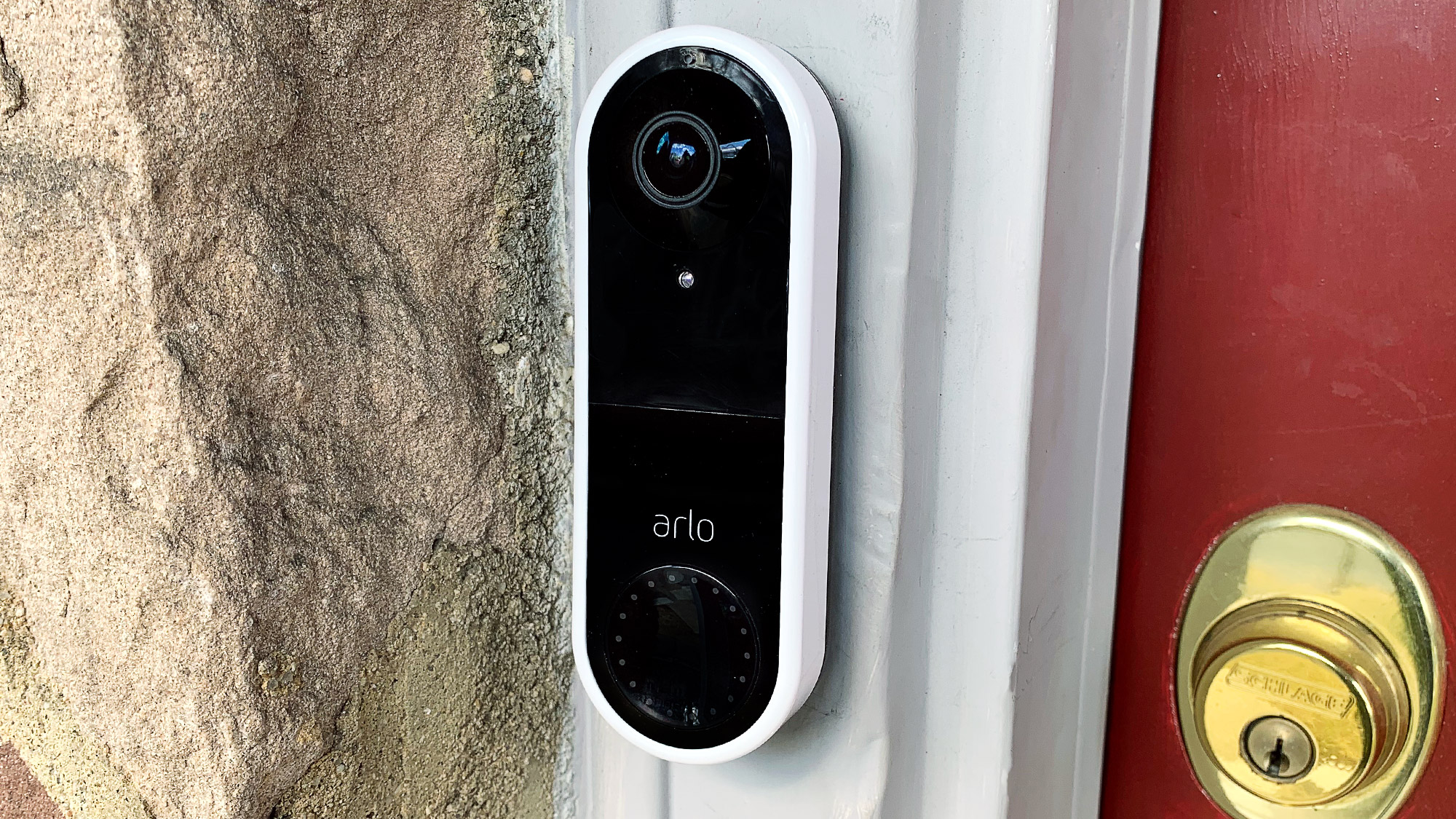
Similar to most video doorbells, the Arlo Video Doorbell has a camera at the top of its face, with a large button at the bottom; press the button, and a circle of LEDs will light up as the doorbell rings your chime.
Arlo Video Doorbell: Video and audio performance
Unusual for a video doorbell camera, Arlo's has a square, 1:1 aspect ratio, so you're not viewing a lot of extraneous stuff on either side of your door. Arlo says that its video doorbell has a 180-degree viewing angle from edge to edge. In my testing, this seems accurate, but like most video doorbells, this one still doesn't let me see what's directly at my front door; the closest it gets is about 18-20 inches away. Very few video doorbells have this range; the Maximus Answer DualCam is one of the few exceptions, as it has a camera pointing directly down at your stoop.
Because of its aspect ratio, the Arlo Video Doorbell has a nonstandard, 1536 x 1536-pixel resolution. I was impressed by the quality of the Arlo's daytime video. On a sunny day, the Arlo was able to capture accurate colors and details in brighter parts of the picture, while also pulling out good colors in shaded portions, such as my front porch. I could even see details in a large evergreen that was out of the sun. Nighttime videos were also pretty good, as I was able to make out details in visitors as they approached the door.
One of the best features of Arlo's Video Doorbell solves an issue common to many video doorbells and security cameras: By the time the camera detects motion and starts recording, the person is already halfway through the frame. Arlo's Video Doorbell continually buffers its video feed so that when it senses motion and starts recording, it includes a few seconds of video before the event starts. As a result, I was able to see everyone who approached my house, from the time they first appeared to the time they left.
There was a bit of a delay in audio when I was talking to someone at the front door through the Arlo Video Doorbell. It was more noticeable on the smartphone end, where it took about 2 seconds before the visitor heard what I said. The delay from their end was shorter, about half a second. In both directions, though, our voices were loud and clear.
Arlo Smart subscription: Cost and features
With every Arlo device you purchase, you get three months of Arlo Smart service for free. This includes 30 days of rolling video storage in the cloud, advanced object detection (vehicles, motion, packages and animals), customizable activity zones and intelligent alerts, which let you call a friend, alert 911 or sound a siren from your phone.
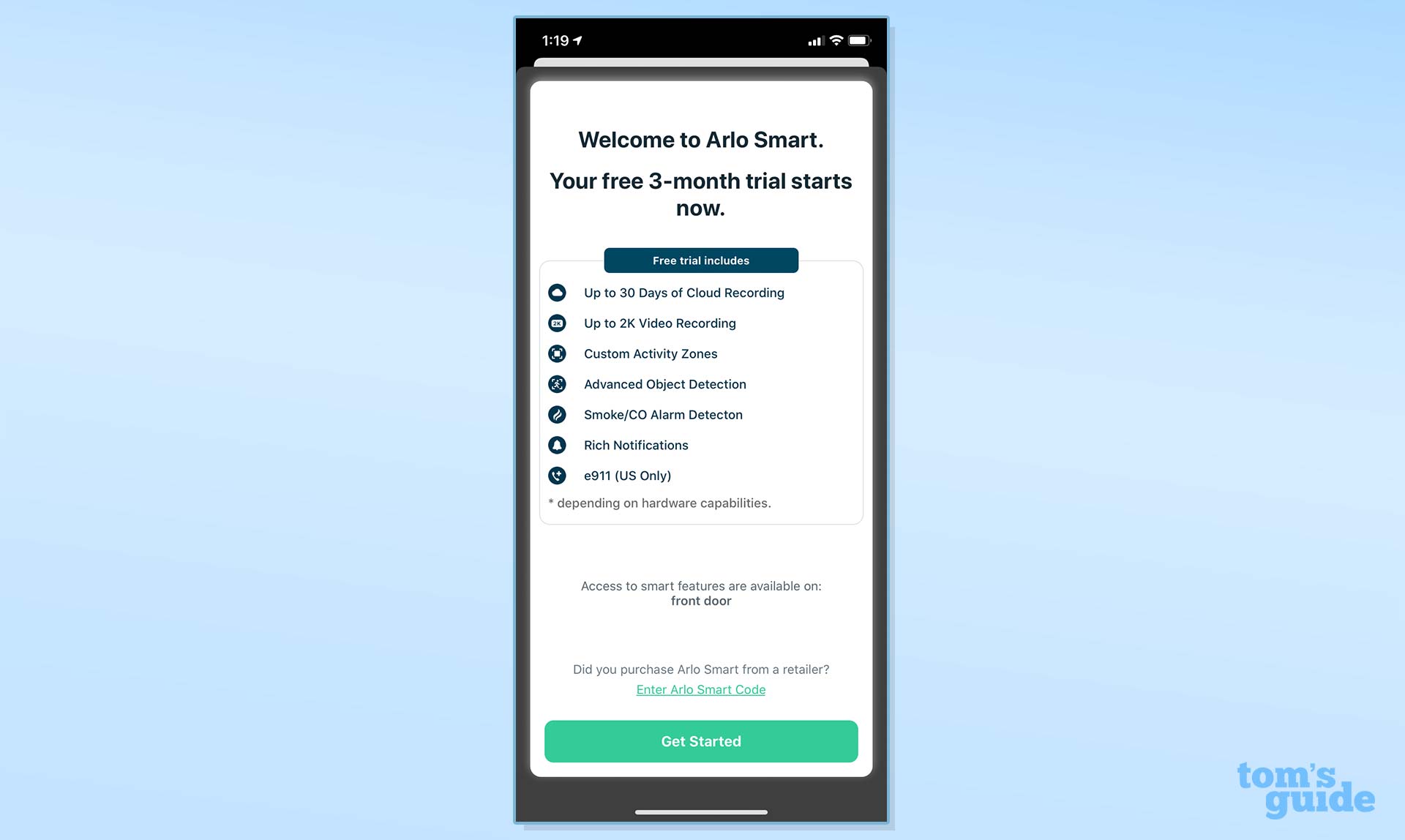
After those three months are up, if you want to continue using those services, you'll have to sign up for the Arlo Smart Premier Plan, which costs $3 per month for a single camera or $10 per month for up to five cameras. This plan lets you save recordings in up to 2K resolution. The Arlo Smart Elite Plan lets you save recordings in up to 4K resolution, but that plan costs $5 per month for a single camera or $15 per month for up to five cameras.
If you don't sign up for one of these plans, you don't get access to any of these features; the most you can do, really, is view live video through the Arlo Video Doorbell and talk to whoever's at your front door.
That's a bit of a bummer, especially considering that with some of Arlo's home security cameras, such as the Arlo Q and the Arlo Pro 2 — two of the best home security cameras — you can save up to seven days of video without signing up for a subscription.
Most of the best video doorbells, including those from Ring and Nest, also make you sign up for a subscription if you want to save videos. When we compared the security camera cloud-storage plans of Nest vs. Arlo vs. Ring, we found that Nest is the least expensive if you have up to four cameras but Arlo's plan is more cost-effective if you have five cameras.
Arlo Video Doorbell app
Provided you've signed up for Arlo's plan, simple toggle switches within the app let you select whether you want to receive alerts in different situations: when the doorbell detects motion, people, vehicles, animals or packages.
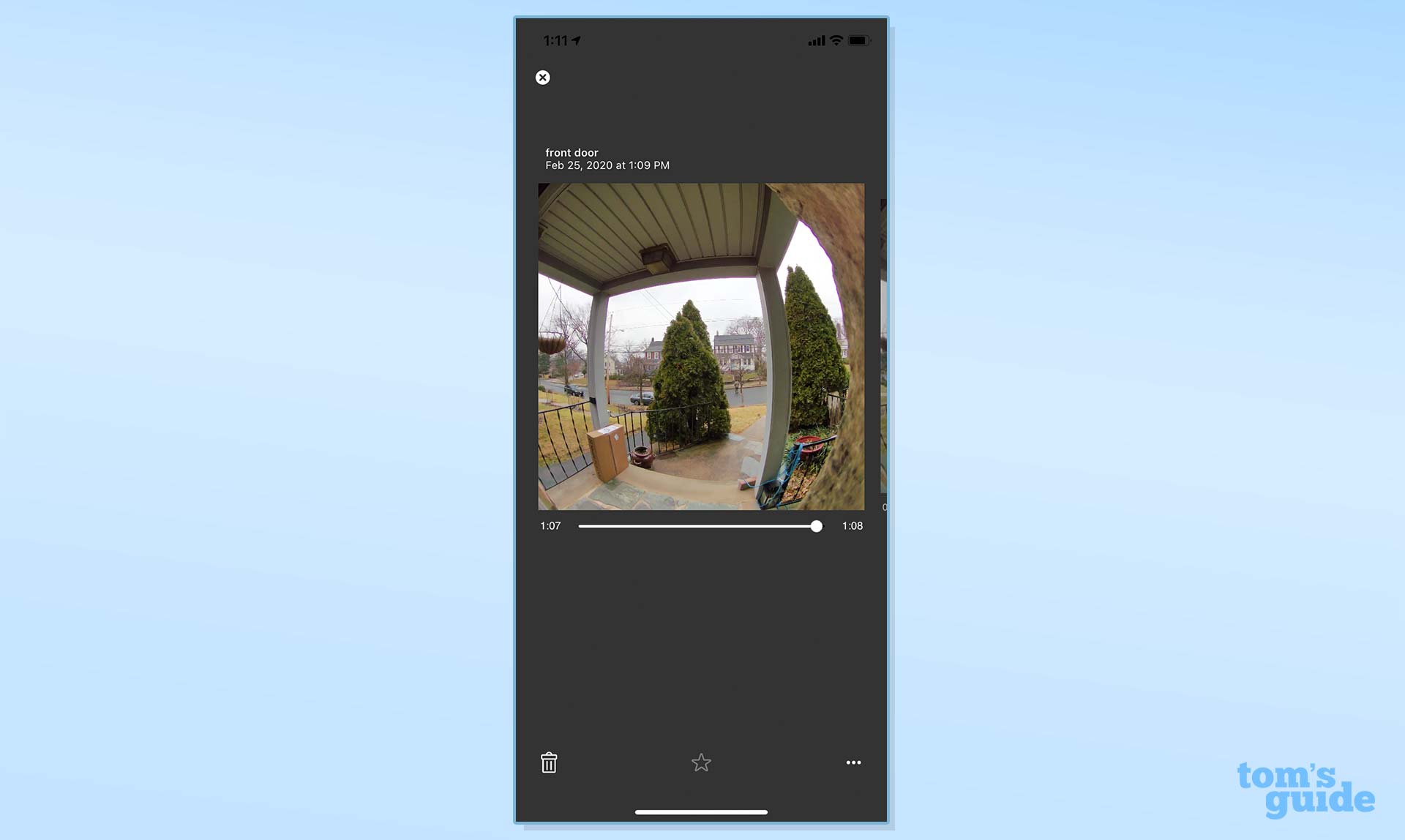
You can also set up activity zones, spots where the camera will send you alerts if it detects motion. You're presented with a static image of what the doorbell's camera sees, and you have to draw a box highlighting the areas where detected motion will prompt a notification. This approach is a little clunky; if you want to highlight an area that's nonrectangular, you have to draw a series of squares to cover the whole area. Both Nest and Ring's apps let you draw irregular shapes, which makes things much easier.
Other options within the app let you adjust the camera's resolution to 1536p, 1080p or 720p; adjust the brightness; and turn auto HDR and night vision on or off.
You can also have the doorbell ask people to leave a message if you can't answer a call within 20 seconds.
Arlo Video Doorbell: Motion, person and package detection
I found that the Arlo Video Doorbell was very good at picking up motion and distinguishing between movement and people. But like every other camera, Arlo's version was prone to a fair share of false alerts.
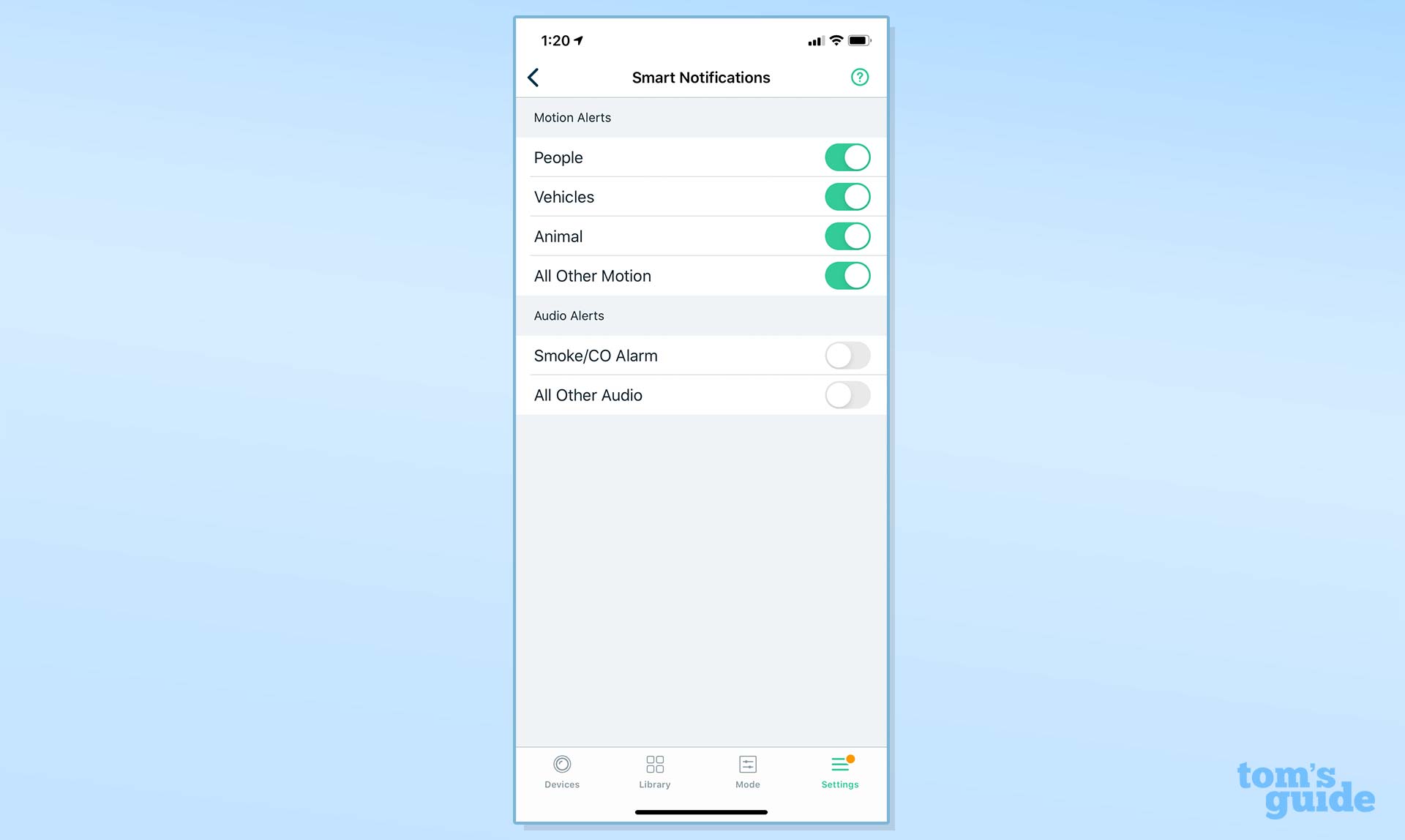
This happened much more frequently when the camera was in night-vision mode, when it thought it saw a person when no one was visible. I suspect that it was tripped up by shadows cast by the headlights from passing cars. In daylight, the doorbell sent me a motion alert every time the wind rustled the branches of a bush near my front door.
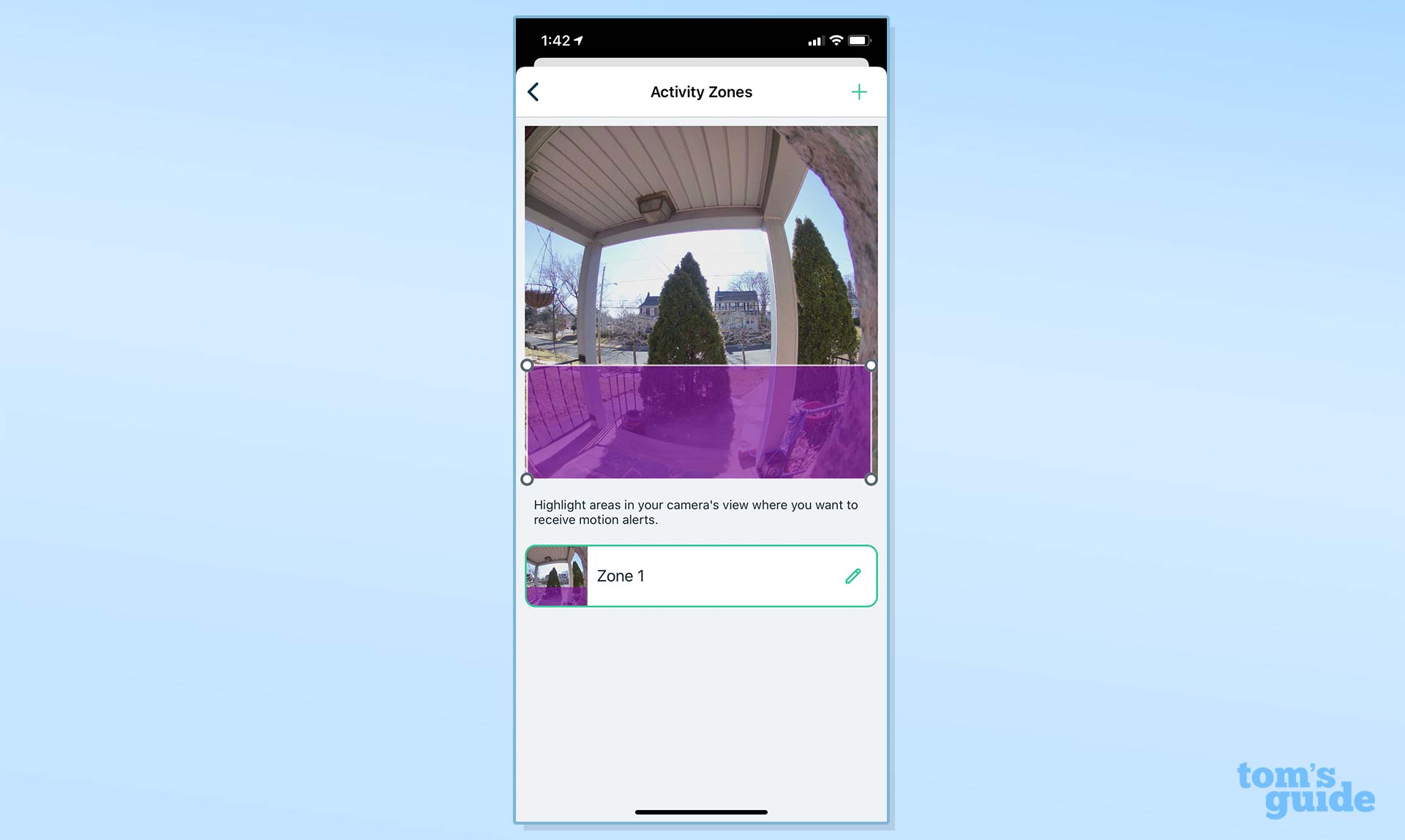
You can adjust the sensitivity of the camera's motion detection, but that control is buried deep in the app. In the Mode tab, you have to select the camera, press the edit button for the Armed mode, select the edit button for the rule you want to change, then press on the Motion Is Detected trigger, after which you can adjust a slider.
Arlo says it's set up this way so that users can set different sensitivities based on the time of day. You do get a lot of flexibility in scheduling and in what the Arlo Video Doorbell will do when it senses motion, but I wish this were just a bit easier to find in the app.
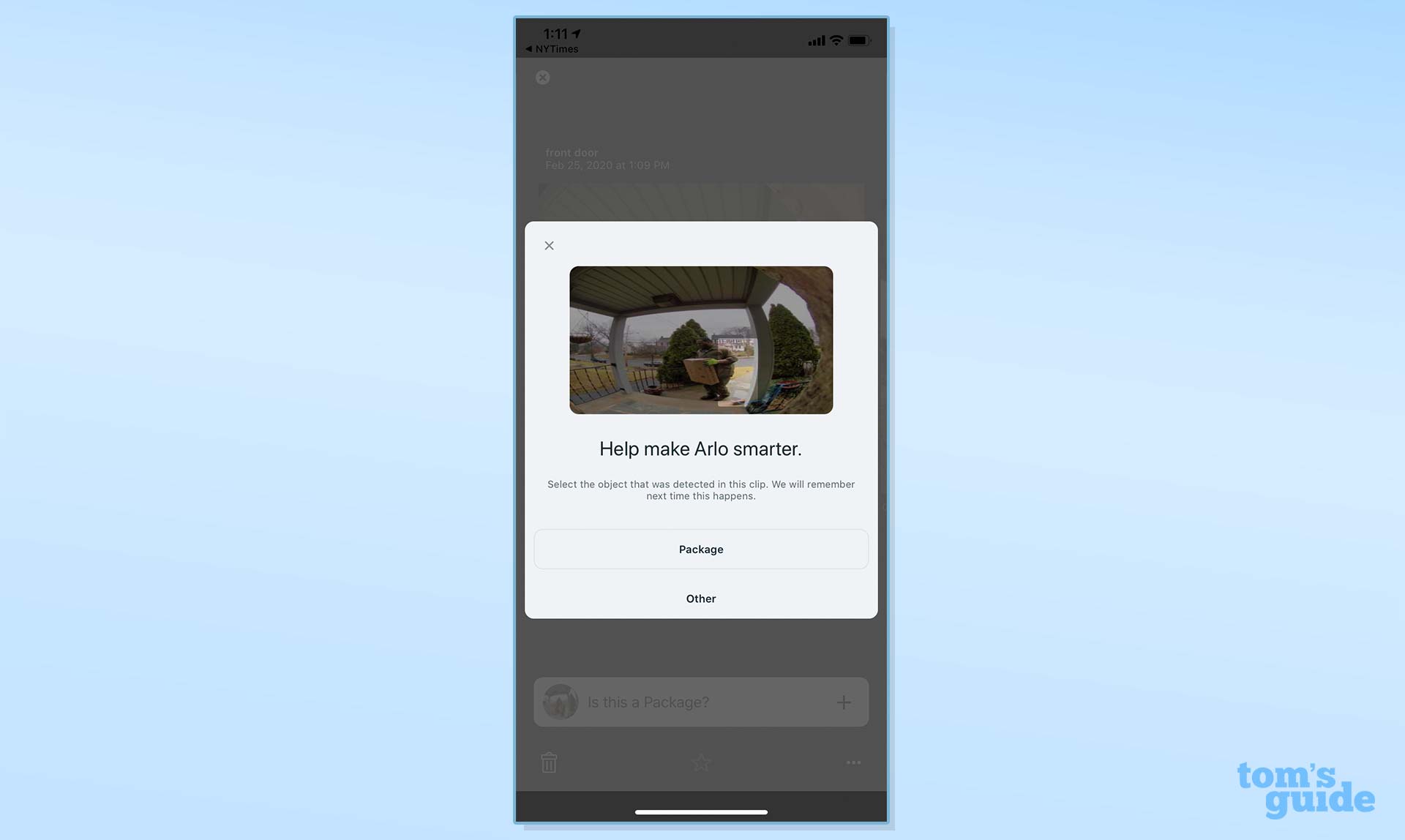
Arlo's package detection works, but it feels like Arlo is still perfecting its package-recognition algorithm. The app sent me a notification when it thought it saw a package and asked me to confirm whether it was correct (it was).
Arlo Video Doorbell: Smart home compatibility
Editor's note: We have updated this section to reflect the fact that the Arlo Video Doorbell now works with both Alexa and Google Assistant.
The Arlo Video Doorbell works with Amazon Alexa and Google Assistant. So, for example, if you have an Amazon Echo Show or Google Nest Hub Max and someone rings the bell, you can ask Alexa or Google Assistant, respectively, to show you a feed from the doorbell's camera, and then you can interact with your visitor.
The Arlo Video Doorbell does not work with HomeKit, but given that Arlo's other home security cameras work with Apple's smart home platform, I imagine it's just a matter of time before this is added, too.
Arlo Video Doorbell: Installation and setup
Getting the Arlo Video Doorbell up and running was a fairly simple affair, but it wasn't as simple as the process with Ring's video doorbells. For one, Arlo requires you to install a small adapter to your doorbell chime. I also preferred the way the Ring Video Doorbell mounted to my door, the wires providing power attach to a base plate and then the video doorbell attaching to the plate.
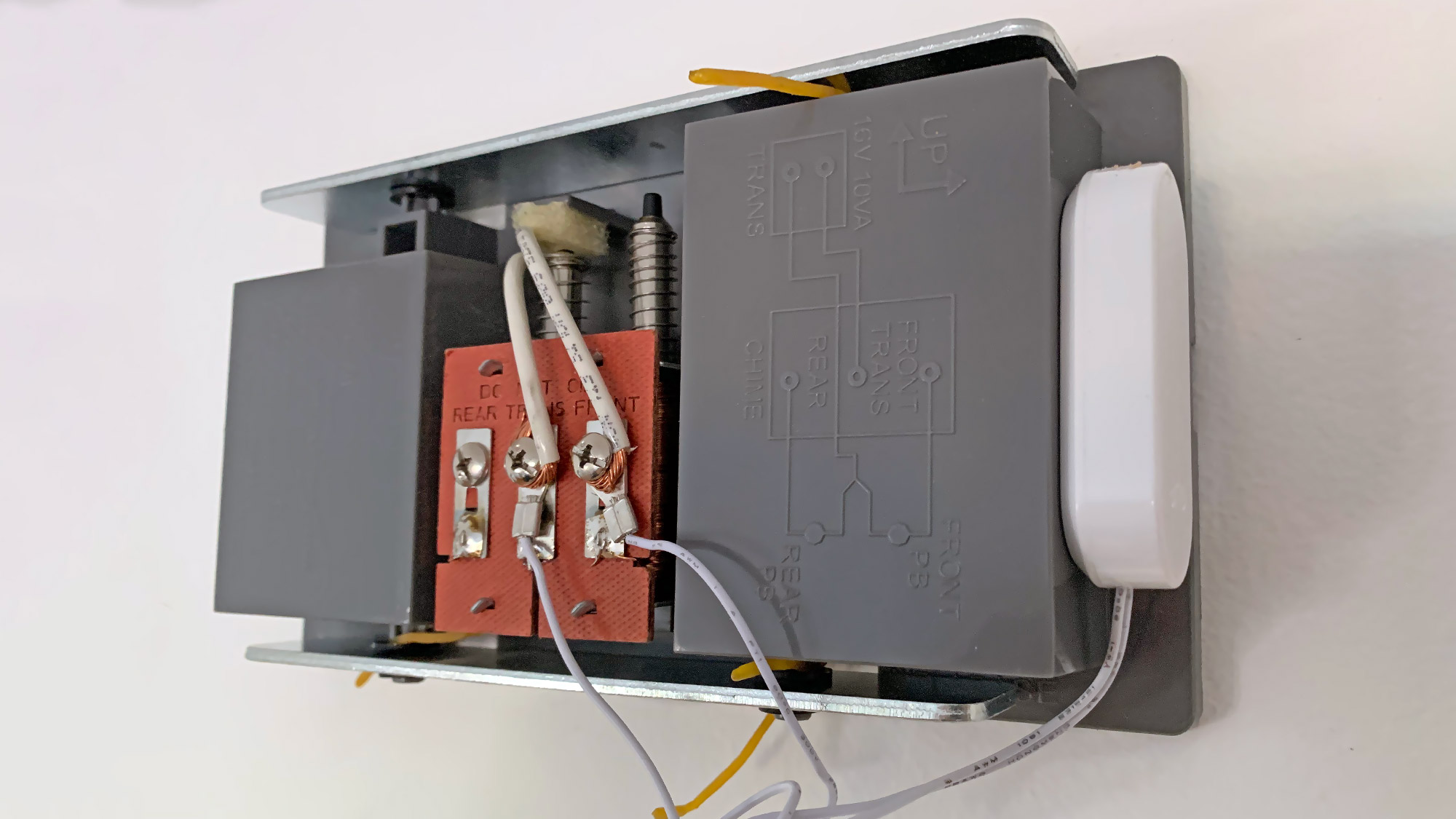
By contrast, you have to connect the power wires directly to Arlo's Video Doorbell, and then attach the device to the base plate. This is a little more awkward. Regardless, the entire affair took about 15 minutes from start to finish.
Because the Arlo Video Doorbell doesn't have a battery, like the Ring Video Doorbell 2 does, you have to install the device where there's already power.
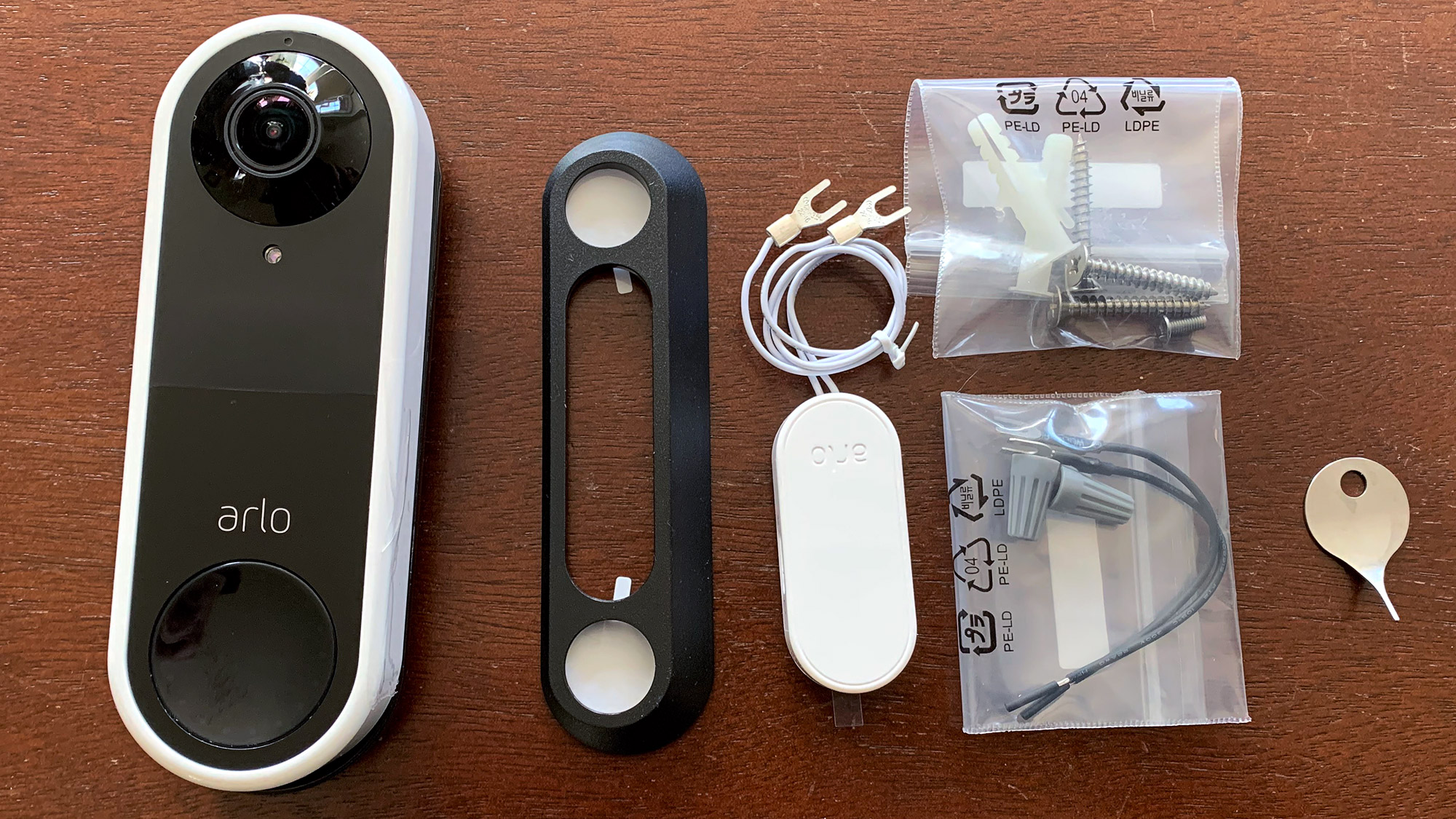
A small, pin-like accessory is used to remove the doorbell from the base plate; it's faster than the two-screw method used by Ring but probably a little less secure. Also included is a small wedge, in case you want to angle the video doorbell more toward your front door.
While I didn't have any trouble connecting the Arlo Video Doorbell to my home Wi-Fi network, I wish that Arlo had something similar to the Ring Chime Pro ($50), which acts as both a doorbell chime and a Wi-Fi extender.
Arlo Video Doorbell verdict
While it could improve in a few areas, the Arlo Video Doorbell carries on Arlo's tradition of producing excellent camera-based devices for making your home secure and more convenient. The Arlo Video Doorbell records high-quality videos, and its app gives you a great degree of control over what the device detects and when it should alert you.
I wish that you could get more features without signing up for a paid Arlo Smart subscription, but the price for Arlo's is reasonable compared to what Ring and Nest charge. And at $150, the Arlo is $50 less than the Nest Hello and Ring Video Doorbell 2. If you have some of Arlo's other home security cameras, adding its video doorbell to your plan makes a lot of sense. But even on its own, the Arlo Video Doorbell is a really good deal.

Michael A. Prospero is the U.S. Editor-in-Chief for Tom’s Guide. He oversees all evergreen content and oversees the Homes, Smart Home, and Fitness/Wearables categories for the site. In his spare time, he also tests out the latest drones, electric scooters, and smart home gadgets, such as video doorbells. Before his tenure at Tom's Guide, he was the Reviews Editor for Laptop Magazine, a reporter at Fast Company, the Times of Trenton, and, many eons back, an intern at George magazine. He received his undergraduate degree from Boston College, where he worked on the campus newspaper The Heights, and then attended the Columbia University school of Journalism. When he’s not testing out the latest running watch, electric scooter, or skiing or training for a marathon, he’s probably using the latest sous vide machine, smoker, or pizza oven, to the delight — or chagrin — of his family.
